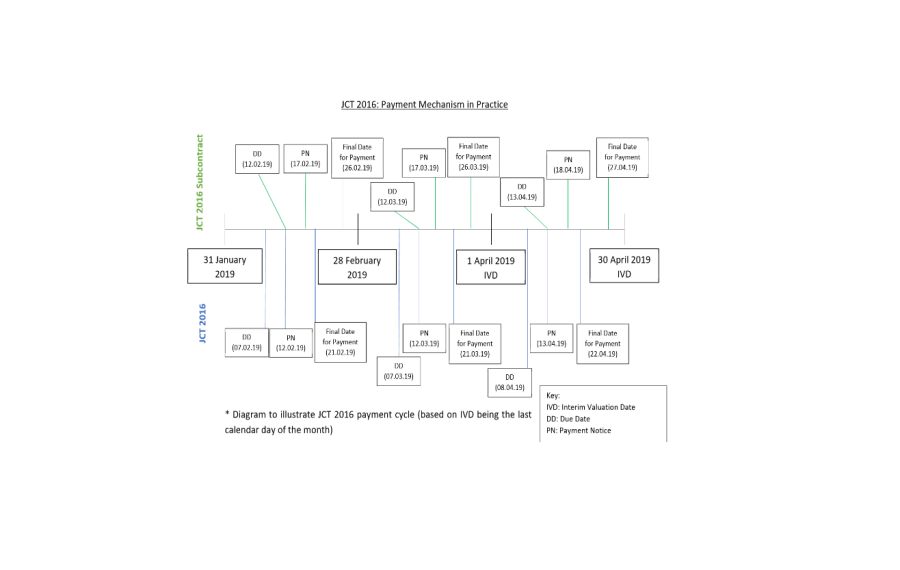The introduction of the IVD is intended to synchronise the payments throughout the contractual chain. The fair payment process is, therefore, only effective if a common IVD is used across all tiers of the project. In reality, as you progress down the contractual chain, the use of standard form contracts becomes less common, meaning the potential benefits may be lost or at least diminished.
In some months the IVD will not be a Business Day and will change to the nearest Business Day in that month. In such circumstances, the parties (and their advisors) will need to recalculate all subsequent dates in the payment cycle. This is a particularly problematic area for Employers. Such a minor change can have far-reaching consequences. Failure on the part of the payer in the contractual chain to issue a Payment Notice by the deadline, subject to a Pay Less Notice (discussed above), means the balance due is the total amount set out in the Interim Payment Application. The courts have consistently held that, irrespective of how inaccurate or inflated the amount demanded, it will all, nevertheless, be due and payable to the payee in such circumstances.
An amount not paid in accordance JCT 2016’s payment terms will constitute a breach of contract and the overdue amounts will accrue interest. The payee can recover any unpaid amounts (and associated interest) as a debt and has the right to suspend performance of the works and even terminate the contract for non-payment. It is crucial, therefore, that parties take note of the dates which govern the payment mechanisms as the consequences of missing such dates can be severe. The courts have in recent times adopted a hard line, against payers, in favour of an overarching objective of securing cash flow down the construction supply chain.
It is, therefore, extremely important to seek professional legal advice before making the switch to JCT 2016. Many problems can be avoided by ensuring that the contracts at all levels of the supply chain are carefully drafted at the outset.











